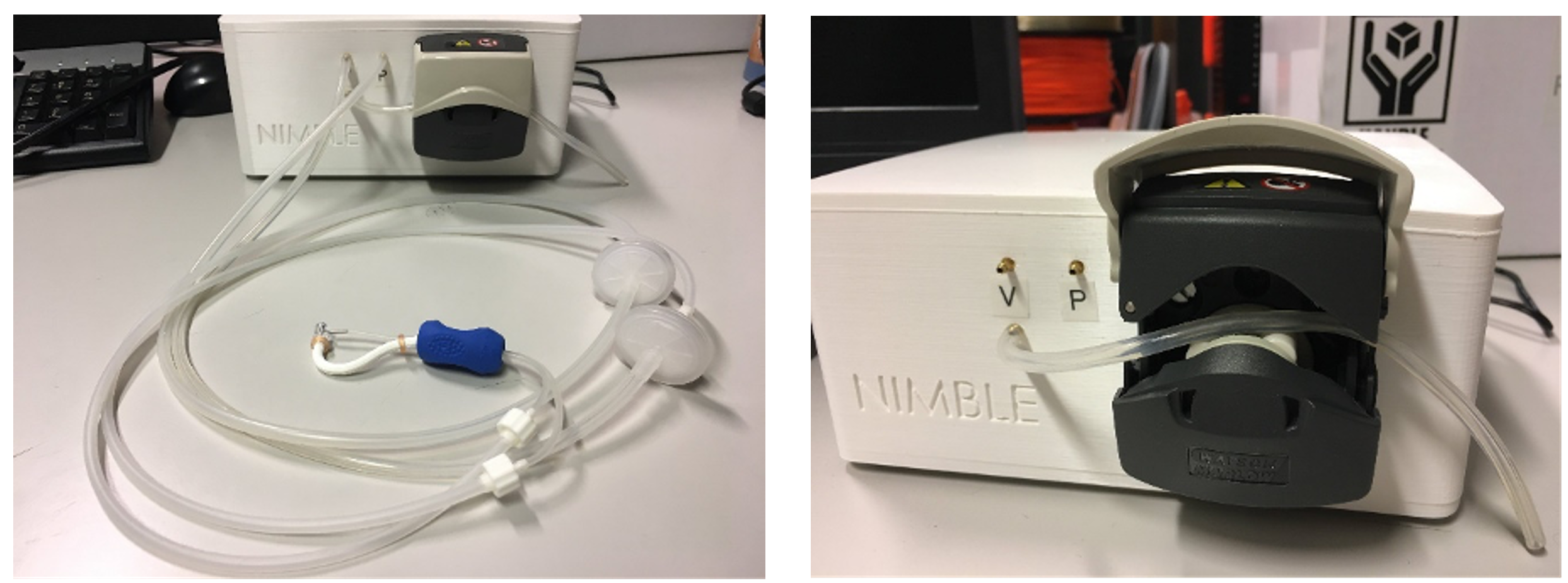In-vivo Mechanical Characterization of Skin
The skin is the largest and most functionally complex organ in our body. It serves as a barrier protecting us from external influences. It regulates the body temperature and permits sensation of touch, heat and cold. The skin consists of three main layers: the epidermis, the dermis and the subcutaneous tissue. The dermis defines most of the structural behavior of the tissue. Several skin diseases result in a structural change of the dermis, where alterations in the composition of collagen fibers can lead to severe consequences in functionality and aesthetics for the patient. To date, clinical standards for diagnosis often rely on subjective assessment methods like palpation or questionnaires performed and answered by clinicians. It is obvious, that these quantification methods depend strongly on the experience of the observer and entail a high variability.
With the NIMBLE (Figure 1) our group developed a novel suction device for non-invasive in-vivo mechanical characterization of skin. The device applies a negative pressure to deform the tissue and detect mechanical parameters, such as tissue stiffness, with a displacement-controlled measurement principle (Figure 2 b).

The light-weight design of the NIMBLE (Figure 2 a) reduces interaction between observer and suction probe, and together with the displacement-controlled measurement principle the sensitivity of the device to minor changes in the microstructure of the skin tissue is increased significantly. Clinical trials revealed the ability of the NIMBLE to early-detect and monitor progression of fibrotic skin diseases, such as systemic sclerosis or formation of hypertrophic scars.

With the NIMBLE we bridge the gap between a reliable and sensitive measurement tool and an easy and unlimited application. The device can be used as disposable or sterilized article and enables measurements directly performed on the patient/volunteer.
Project Lead
Dr. Bettina Thumm
Collaborations
- Dr. Julia Elrod and Prof. Dr. Clemens Schiestl (Burn Center, Division of Plastic and Reconstructive Surgery & Children’s Research Center (CRC), University Children’s Hospital Zurich)
- Prof. Dr. Oliver Distler (Department of Rheumatology, University Hospital Zurich)
This work is part of the Skintegrity project under the umbrella of University Medicine Zurich/Hochschulmedizin Zürich.
The project is supported with a ETH Pioneer Fellowship .
[1] A novel ultra-light suction device for mechanical characterization of skin,
Bettina Müller, Marco Pensalfini, Raoul Hopf, Oliver Distler, Clemens Schiestl and Edoardo Mazza, PLoS ONE 2018, DOI: 10.1371/journal.pone.0201440
[2] An effective procedure for skin stiffness measurement to improve Paediatric Burn Care,
Julia Elrod, Bettina Müller, Christoph Mohr, Martin Meuli, Edoardo Mazza and Clemens Schiestl, Burns 2019, DOI: 10.1016/j.burns.2019.02.004
[3] Validation of the suction device Nimble for the assessment of skin fibrosis in systemic sclerosis, Bettina Müller, Lisa Ruby, Suzana Jordan, Marga B. Rominger, Edoardo Mazza and Oliver Distler, Arthritis Research & Therapy 2020, DOI: 10.1186/s13075-020-02214-y
[4] On the Reliability of Suction Measurements for Skin Characterization, Bettina Mueller, Julia Elrod, Oliver Distler, Clemens Schiestl and Edoardo Mazza, Journal of Biomechanical Engineering 2020, DOI: 10.1115/1.4047661
[5] Longitudinal monitoring and prediction of long-term outcome of scar stiffness on pediatric patients, Bettina Müller, Edoardo Mazza, Clemens Schiestl and Julia Elrod,
Burns & Trauma 2021, DOI: 10.1093/burnst/tkab028